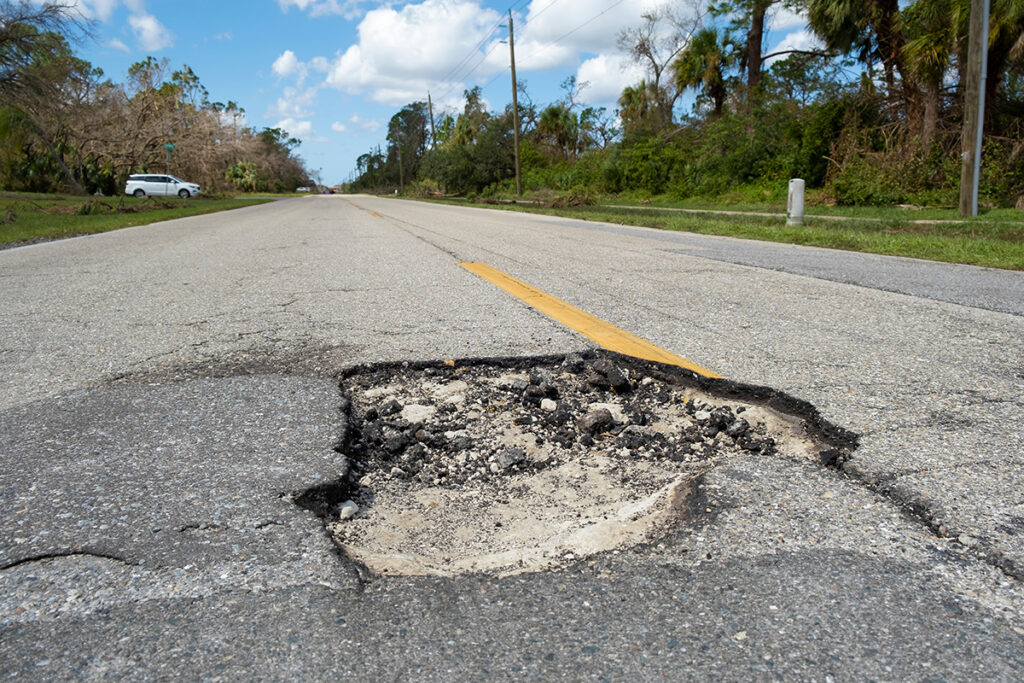Scientists from King’s College London, Swansea University, and researchers in Chile have developed an innovative method to tackle one of the most persistent infrastructure issues—potholes. By using microscopic biobased spores, they have created a self-healing asphalt that could drastically reduce the need for costly and frequent road repairs.
Potholes and road cracks form as bitumen, the adhesive material in asphalt, hardens when exposed to oxygen. Over time, this leads to significant structural damage, requiring maintenance that costs billions globally. The researchers have now found a way to reverse this process, potentially eliminating the need for traditional repair methods altogether.
The True Cost of Potholes
Potholes come with a hefty price tag for both governments and drivers. In the United States alone, pothole-related vehicle damage costs an estimated $3 billion annually, averaging around $306 per driver. In the United Kingdom, the costs reach approximately £143.5 million each year. These figures exclude the logistical burden on municipalities tasked with ongoing road maintenance.
Repairing potholes also has indirect costs, including traffic congestion, delays, and environmental impacts from roadwork equipment. A self-healing asphalt could transform road infrastructure by significantly reducing these expenses while also improving driving conditions and road safety.
How Self-Healing Asphalt Works
To address bitumen cracking, scientists have designed a solution that mimics biological healing processes found in nature. Their self-healing asphalt is infused with biobased spores—microscopic structures filled with recycled oil-based rejuvenators. When cracks begin to form, these spores release their contents, reversing the damage and restoring the material’s original structure.
Laboratory experiments have demonstrated that small cracks in asphalt can heal within an hour, a process that traditionally takes months due to delayed maintenance. This means roads could remain in better condition for longer, reducing the need for emergency repairs and minimizing disruption to traffic.
Sustainability and Environmental Impact
Beyond reducing repair costs, the researchers have incorporated sustainable materials such as biomass waste into their asphalt mixture. This approach decreases reliance on petroleum-based resources, which are both expensive and environmentally damaging. Biomass waste is widely available and cost-effective, making it a viable alternative for infrastructure projects worldwide.
By sourcing materials locally, self-healing asphalt can also lower carbon emissions associated with transportation and production. This makes it an attractive solution for regions that struggle with high road maintenance costs and limited access to petroleum-based bitumen. If adopted on a large scale, this technology could contribute to more sustainable road construction and maintenance practices.
The Future of Self-Healing Roads
While the initial results are promising, further research and investment are necessary before self-healing roads become a widespread reality. The laboratory findings have yet to be published, and large-scale testing is needed to assess performance under real-world conditions.
If successfully implemented, self-healing asphalt could revolutionize infrastructure management, reducing maintenance costs, improving road quality, and extending the lifespan of highways and streets. With continued advancements, this technology could mark the beginning of a new era in sustainable road construction.


